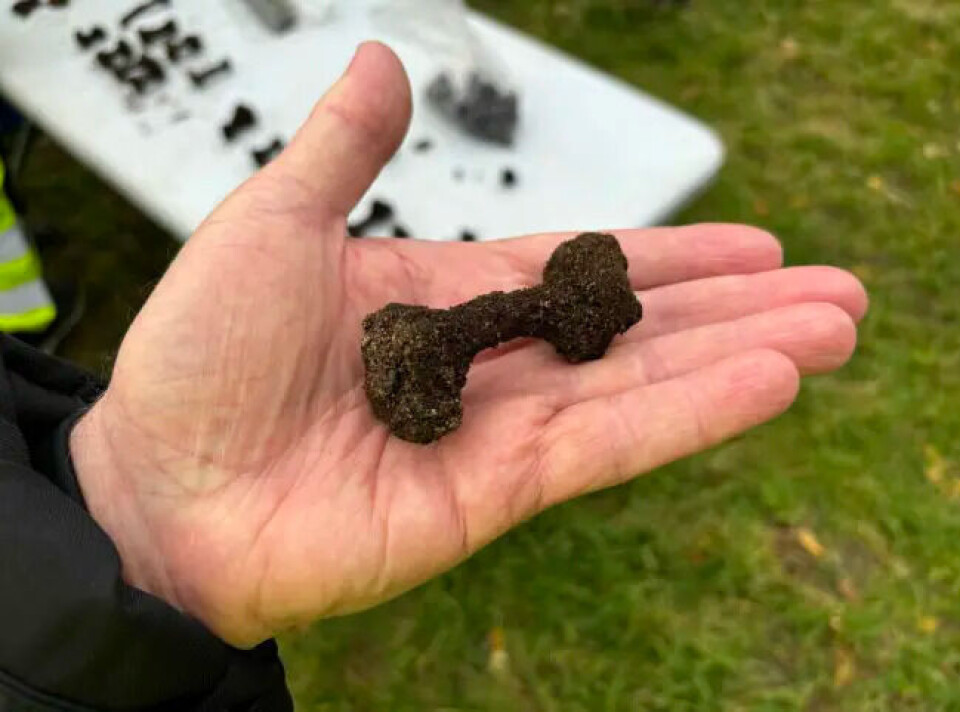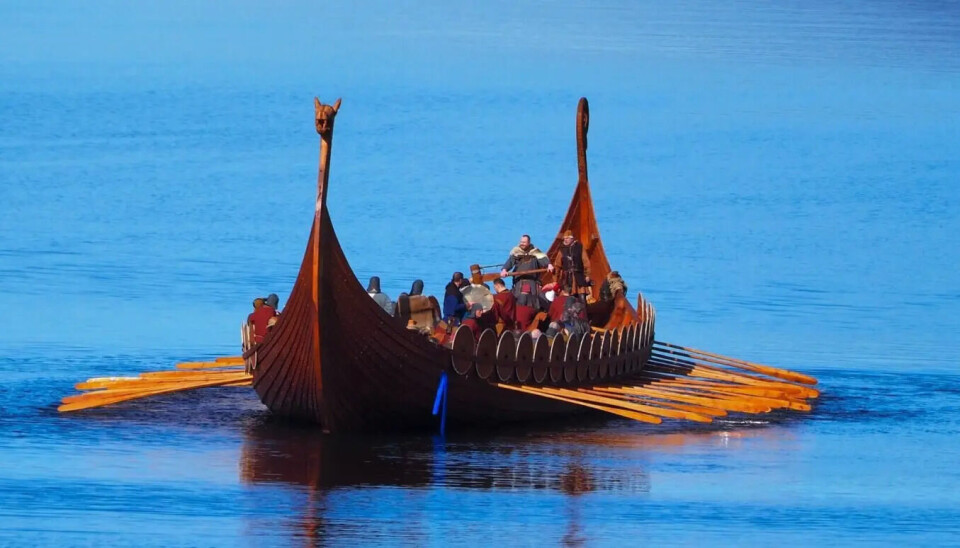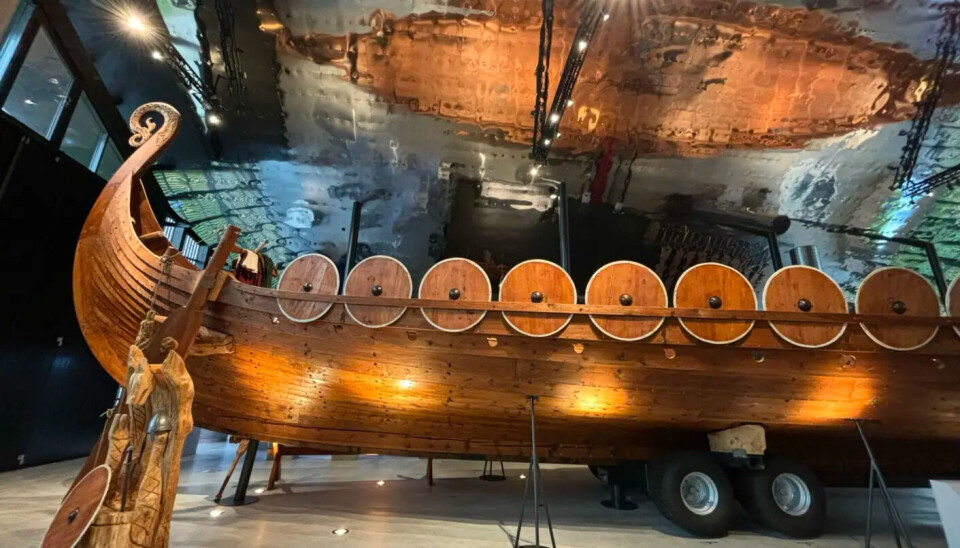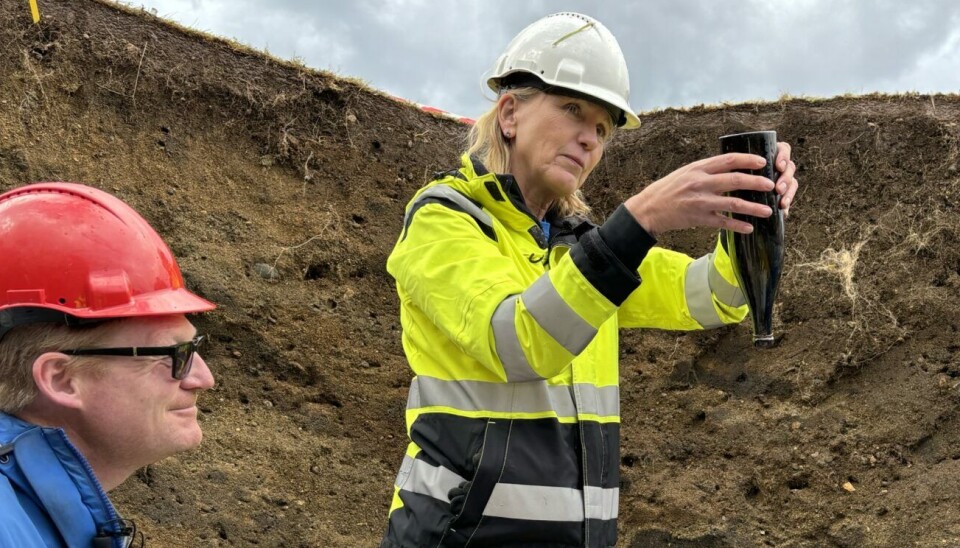
Are the remains of Norway's largest Viking ship located here?
It has been 150 years since the Myklebust burial mound was first excavated, revealing traces of a massive Viking ship. Now, archaeologists have returned to the site.
When young archaeologist Anders Lorange excavated this mound 150 years ago, he uncovered more ship rivets than he could transport back to Bergen.
He managed to take about 700.
Last week, when archaeologists revisited the Myklebust burial mound, they discovered two more piles of ship rivets.
Over 600 rivets had been left behind by Lorange, waiting for future archaeologists before he sealed the mound again.
“To have the chance to excavate such a remarkable find as the Myklebust Ship, in a site so central to the Viking Age, is something I never thought I would experience,” Morten Ramstad, project leader for the excavation and head of the University of Bergen’s Section for Cultural Heritage Management, said in a press release (link in Norwegian).
But do the new findings provide answers as to whether the Myklebust Ship is the largest Viking ship ever found in Norway?


Ship rivets and shield bosses
“We’ve secured materials that will soon give us a more solid basis for conclusions,” Ramstad tells sciencenorway.no.
Most viewed
The ship rivets unearthed in 1874, which are now kept in Bergen, were poorly preserved, he explains.
The newly discovered ship rivets are in much better condition.
Additionally, modern analysis methods could yield entirely different insights compared to what was possible in Lorange’s time.
Below you can watch a video from the excavation:
Ramstad estimates that only about a quarter of the mound has been excavated, meaning the total number of rivets used in this ship could exceed 5,000.
“These rivets will give us crucial information about the type of ship it was, its length, and what function it served. They are key to a new understanding of this ship, in which a chieftain was buried over 1,200 years ago,” he says.
The Myklebust Ship is believed to be the longest Viking ship in Norway, based on the number and size of the ship rivets and the 42 shield bosses Lorange found.
Shield bosses are the central part of the shield, where the handle is attached. This part is usually the only piece that survives, as the rest of the shield, made of wood, rots away. Archaeologists also found a few more shield bosses during last week's excavation.

Precise dating is expected
What makes the Myklebust Ship unique, and perhaps why it has been somewhat overlooked compared to the Gokstad and Oseberg ships found later, is that it was cremated.
Ramstad explains that about half of Viking Age graves in Western Norway involved cremation.
"But we don't know of any other ship burials that included cremation. This makes the Myklebust Ship unique among Viking ship burials," he says.
Samples taken by archaeologists will reveal how the cremation was carried out. Biological traces will tell us the time of year the burial occurred and whether the ship was burned on-site or elsewhere before being moved to the burial site.
Lorange's dating of the ship, to the late 9th century, was based on the artefacts he found.
"Now we'll have more precise dating, allowing us to place this ship in a broader Viking context and link it to other historical events," says Ramstad.
Georadar surveys have indicated the likely presence of more graves within the Myklebust burial mound. Surrounding the site, archaeologists have also discovered additional graves – both burial mounds and flat graves (unmarked) – as well as a settlement from the Viking Age.


Gateway to the realm of the dead
Archaeologists have also confirmed another of Lorange's findings. In his descriptions, he mentioned a foot trench around the mound, with two bridges. Lorange believed the foot trench was four metres wide. This has been confirmed by the georadar survey and the excavation.
Ramstad and his colleagues wonder if the foot trench may have served a function similar to a moat, as it is four metres wide and one metre deep.
"The main purpose was probably to provide building material for the mound. But it also made the mound appear more imposing than it actually was," he says.
"This was a gateway to the realm of the dead, and it must have been a spectacular sight with four metres of water surrounding the mound," he says.
"Would be exciting if to confirm"
"It's incredibly exciting that we are once again examining a grave where a ship burial took place," says Knut Paasche.
He is an archaeologist at the Norwegian Institute for Cultural Heritage Research and has extensively studied ship burials and Viking ships.
"But while they're excavating, it would be exciting if we could confirm whether this is indeed the longest Viking ship in Norway," he says.
"To know for sure, they would need to excavate the entire mound. So far, they've been cautious and only opened a small part," he says.
In total, around 1,300 rivets have now been found in connection with the Myklebust Ship. For the Gokstad Ship, over 3,000 rivets were discovered – and that ship is only 23 metres long, Paasche points out.
The longest Viking ship we know of was found in Roskilde, Denmark, according to the archaeologist. The warship Roskilde 6 was 36-37 metres long.
Why such large rivets?
A few years ago, Christian Løchsen Rødsrud led the excavation of the Gjellestad Ship. He is currently working for the Norwegian Directorate for Cultural Heritage, preparing an application to have traces of Norway's Viking Age included on the UNESCO World Heritage List.
But does he believe the Myklebust Ship is the largest Viking ship in Norway?
"It’s incredibly hard to say anything for sure; the context is messy, and it’s been burned. We don’t have a ship, as we do with Oseberg and Gokstad, or even an imprint like we have for Gjellestad," says Rødsrud.
"The speculation is partly based on the unusually large rivets, but that alone is not proof. Longer rivets could have been needed if the ship was built of pine instead of oak," he says.

———
Translated by Alette Bjordal Gjellesvik
Read the Norwegian version of this article on forskning.no

Subscribe to our newsletter
The latest news from Science Norway, sent twice a week and completely free.




































